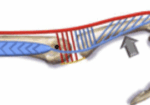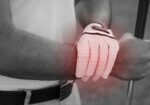Sensory interventions on motor function, activities of daily living, and spasticity of the upper limb in people with stroke: A randomized clinical trial.
Filed under Treatments, Uncategorized
Maryam, D., Parvin, R., Hossein, B., Jalili, M. & Hosein, T. (2020). Sensory interventions on motor function, activities of daily living, and spasticity of the upper limb in people with stroke: A randomised clinical trial. Journal of Hand Therapy, Jun 18;S0894-1130(20)30076-4. doi: 10.1016/j.jht.2020.03.028. Online ahead of print.
The Skinny:
- Stroke is the second cause of death, leading to sensory impairments and motor problems.
- The purpose of this study was to determine if proprioceptive and exteroceptive stimulation would improve outcomes for spasticity and activities of daily living (sensory stimulation activities for stroke patients) compared to traditional therapy in chronic stroke patients (hand therapy for stroke patients).
- Participants were randomly assigned to two groups
Intervention (Group 1):
- Exteroceptive exercises Included: Facilitatory or inhibitory techniques, fast brushing, stretch pressure, icing,
- Proprioceptive Stimulation: Weight-bearing, heavy joint compression, and stretch pressure
- Traditional therapy
Control (Group 2) :
- Traditional therapy
In the Weeds:
- A single-blinded clinical trial comparing the effect of exteroceptive and proprioceptive stimulations in people who have suffered from a stroke. Sixty patients who were are least 6 months post-stroke were divided into two groups intervention (group one) and control (group 2).
- Patients attend therapy 4 days per week for 45-minute sessions for 6 weeks.
- Outcome measures included the Modified Ashworth Scale, Fugl-Meyer assessment of Motor Recovery after Stroke, and Barthel Index. These were completed pre and post-study.
Bringing It Home:
- Patients in the intervention group showed improvements in motor function, activities of daily living, and improvement in spasticity compared to the control group. Adding proprioception and exteroceptive stimulation can improve motor function and ADLs even in chronic stroke patients. These can be added to your traditional therapy regimes.
Rating:
- 4/5
- Limitations: The article did not give a definition of traditional therapy. The sample size is fairly small in number. Long-term follow-up is unknown which would be helpful in determining if the interventions improved long terns outcomes.
More To Read
Creating an Action Plan for Addressing Mental Health in the Clinic
Blog By: Rachel Reed As hand therapists, our care for our patients must be driven by the goal of treating the whole person, not just their hand or injury (Hannah, 2011). Occupational therapy is a unique profession in which we are equipped to view our patients through a holistic lens. With this lens, we are…
Read MoreINTEROSSEOUS MUSCLE TIGHTNESS TESTING
May 2012 No. 19 INTEROSSEOUS MUSCLE TIGHTNESS TESTING Judy Colditz, OT/L, CHT, FAOTA INTEROSSEOUS MUSCLE TIGHTNESS TESTING – ARE YOU DOING IT CORRECTLY? The common term “Intrinsic Tightness Testing” is a misnomer as it describes a maneuver specifically designed to test tightness of the interosseous muscles. The interosseous muscles are small, short-fibered muscles contained within…
Read MoreWhich is better for DeQuervain’s: Splinting or Injection?
Rapid Review Cavaleri, R., Schabrun, S. M., Te, M., & Chipchase, L. S. (2016). Hand therapy versus corticosteroid injections in de Quervain’s disease treatment: A systematic review and meta-analysis. Journal of hand therapy: official journal of the American Society of Hand Therapists, 29(1), 3–11. https://doi.org/10.1016/j.jht.2015.10.004 The Skinny: DeQuervain’s Tenosynovitis is a stenosing tenosynovial inflammation affecting the…
Read MoreRapid Review: Is Finger Splinting Necessary after Flexor Tendon Repair?
Outcome of Flexor Tendon Repair Using Eight-Strand Core Stitch Without Postoperative Finger Splinting Reference: El-Gammal, T. A., Kotb, M. M., Ragheb, Y. F., El-Gammal, Y. T., & Anwar, M. M. (2024). Outcome of Flexor Tendon Repair Using Eight-Strand Core Stitch Without Postoperative Finger Splinting. HAND. https://doi.org/10.1177/15589447231220686 The Skinny: The purpose of this study was to…
Read MoreSign-up to Get Updates Straight to Your Inbox!
Sign up with us and we will send you regular blog posts on everything hand therapy, notices every time we upload new videos and tutorials, along with handout, protocols, and other useful information.






